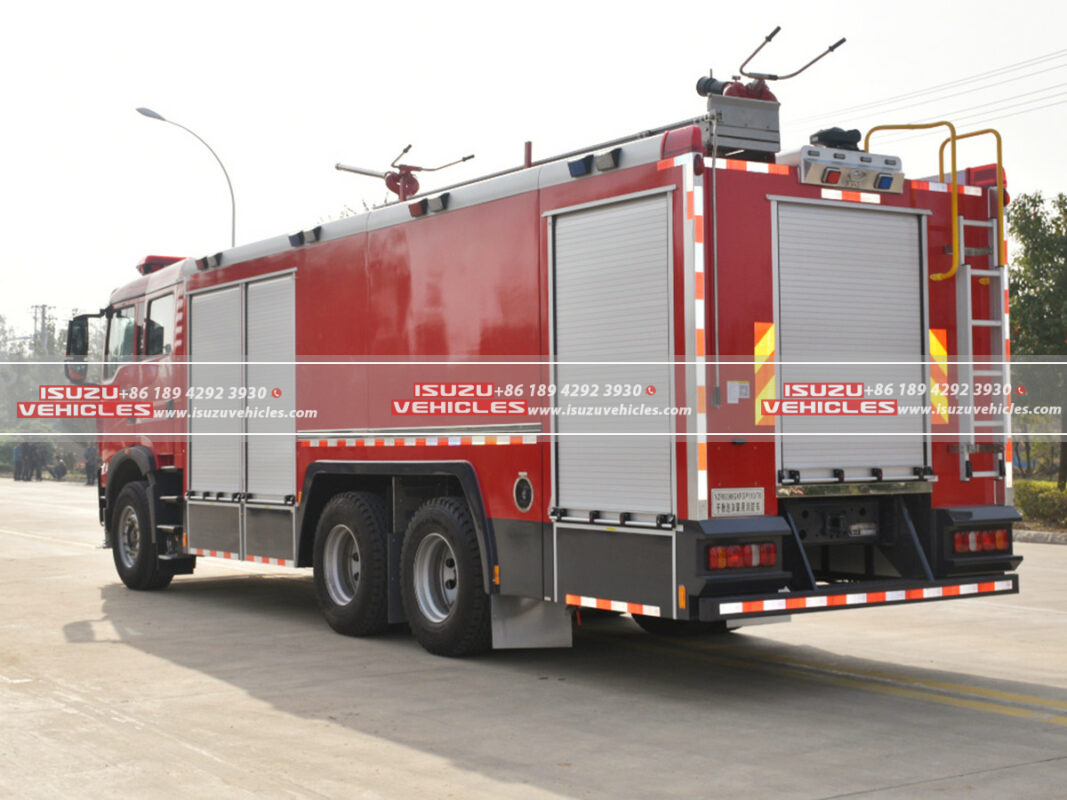Ecuador’s firefighting capabilities have entered a new era with the delivery of 25 advanced ISUZU fire trucks, a strategic investment aimed at bolstering emergency response infrastructure across the country’s diverse and challenging landscapes. These purpose-built vehicles, part of a $12 million modernization initiative by Ecuador’s National Risk Management Secretariat, are engineered to address the unique demands of urban firefighting, high-altitude rescues, and wildfire containment. The deployment marks a critical step in Ecuador’s broader strategy to enhance public safety, particularly in regions prone to volcanic activity, seismic events, and seasonal wildfires. Alongside these fire trucks, the integration of ISUZU bucket trucks for aerial rescues and ISUZU tanker trucks for water supply logistics underscores a comprehensive approach to emergency management.
1. Cutting-Edge Design for Multifaceted Firefighting
The newly delivered ISUZU fire trucks combine rugged reliability with specialized fire suppression technologies, tailored to Ecuador’s geographic and operational challenges.
High-Performance Firefighting Systems
At the core of each unit is a 5,000-liter water tank paired with a high-pressure pump capable of discharging 3,800 liters per minute—sufficient to tackle industrial blazes or multi-story building fires. The trucks feature dual-agent foam systems for combating fuel-based fires, a critical capability for Ecuador’s oil-producing regions like Sucumbíos.
Adaptability to Extreme Conditions
Built on ISUZU’s FVR 34P chassis, these trucks are equipped with:
- All-wheel drive for navigating unpaved mountain roads in the Andes
- Altitude-compensated turbochargers ensuring optimal engine performance above 3,000 meters
- Heat-resistant cab insulation and oxygen supply systems for crew safety in high-temperature environments
The inclusion of 360-degree thermal cameras and drone launch platforms enhances situational awareness during low-visibility operations, such as nighttime wildfires in the Amazon basin.
2. Transforming Emergency Response Nationwide
The ISUZU fire trucks are being deployed to regions where outdated equipment has historically hampered disaster response times:
Urban Firefighting in Guayaquil and Quito
- Telescopic ladders extending to 30 meters for high-rise rescues in rapidly growing cities
- Compressed air foam systems (CAFS) reducing water usage by 50% while improving fire suppression efficiency
Wildfire Management in the Andean Highlands
- Quick-release hose reels (1,200 meters capacity) for rapid deployment in rugged terrain
- Onboard command centers with satellite-linked communication systems for coordinating multi-agency responses
Industrial Protection in Manabí and Esmeraldas
- Explosion-proof electrical systems for refinery and port firefighting
- Chemical neutralization tanks to manage hazardous material spills
Initial drills in Cotopaxi Province demonstrate a 35% reduction in response times compared to previous-generation vehicles, with firefighters reporting enhanced maneuverability in tight urban streets and remote rural areas alike.
The integration of these fire trucks into Ecuador’s emergency fleet is further strengthened by complementary ISUZU vehicles. ISUZU bucket trucks, equipped with hydraulic platforms, are now deployed for elevated rescues in collapsed structures, while ISUZU tanker trucks ensure uninterrupted water supply during prolonged wildfire operations. This holistic modernization effort, backed by ISUZU’s local service network and technician training programs, positions Ecuador to meet both current and future public safety challenges with unprecedented efficiency. As climate-related disasters intensify, the ISUZU fire trucks exemplify how targeted technological investment can safeguard communities while setting a new benchmark for emergency preparedness in Latin America.
